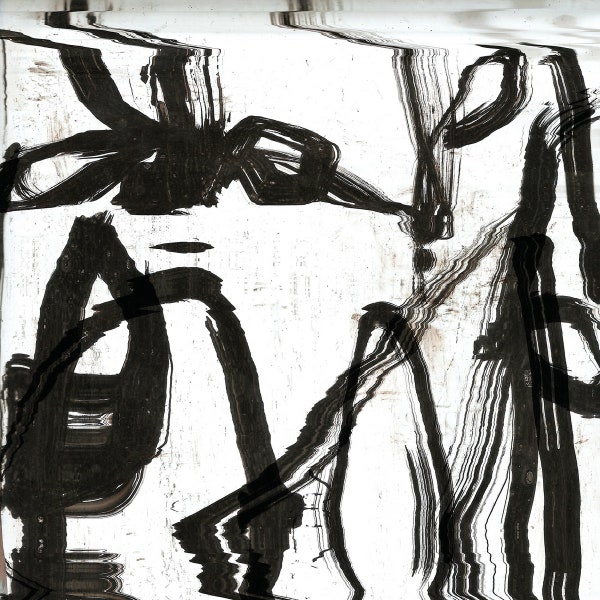In 1962, an American ad man named Martin Speckter proposed a new punctuation mark. The sublimely named “interrobang” combined question and exclamation into a single expression of quizzical incredulity: “What are those‽‽‽” This space-age innovation sadly didn’t catch on, but the spirit of the interrobang is close at hand. If you’ve ever found yourself laughing out loud in the middle of an especially audacious guitar solo, or shaking your head at the brazen WTF‽-ness of a track being mixed into a DJ set, then you’ve felt it move through you. Rotherham, England’s Rian Treanor knows how to punctuate his hyper-rave tracks with such bold-faced moments, and his second album strings dozens of them together into an astonishing suite of interrobangers.
Treanor’s signature is readily apparent in all the music he has released since his first EP in 2015: pointillist impressions of the rave continuum wrought from maddening modulations, airless spaces, and nano-shards of footwork, garage, and bleep techno. Danceable yet distinctly academic, his output resembles the contemporary hypno-worlds of Don’t DJ or Barker, as well as a grand lineage of extreme computer music led by fellow Northerners like Autechre and Mark Fell (who happens to be Treanor’s dad). Over time this sound has warmed up a bit, shedding its technical outerwear and moseying towards the center of the dancefloor. On 2018’s RAVEDITS, Treanor fired Whigfield’s ’90s Eurodance smash “Saturday Night” through a splatter gun to hilarious and bruising effect; last year’s debut album, Ataxia, featuring a clutch of stuttering vocal edits, took its name from a condition that leads to uncontrolled bodily movements.
Shortly after the release of RAVEDITS, Treanor traveled to Uganda to play at Nyege Nyege Festival, an offshoot of Kampala-based label Nyege Nyege Tapes. In its four years in operation, this small imprint has had an outsized effect on dancefloors at home and abroad, and the trip was by all accounts revelatory for Treanor. After the festival he spent a few weeks in the Nyege Nyege studio in Kampala, further attuning himself to the speedy vernacular of East African singeli. That influence is unignorable on the opening track of File Under UK Metaplasm, “Hypnic Jerks”—the first of many moments that come stamped with a huge, inky interrobang. What, and indeed, the fuck: A track that starts at 180BPM and still sees fit to accelerate the rubbery kicks into a quadruple-time assault? The recollections of a rappelling window cleaner forced into battle with a swarm of mbira-playing drones? A washing machine filled with rubble and Lego about to combust on its final spin? Words, words, words; the feeling would be more succinctly expressed with a single, unequivocal glyph.
After passing through the molecule-separating centrifuge of “Hypnic Jerks,” the album takes many forms: tough-nut acid footwork on “Metrogazer”; strange dancehall on “Opponent Process,” his sputtering tribute to Equiknoxx; breathless grime’n’breaks on “Debouncing”; and an expedition into an abandoned power station on “Closed Curve.” Treanor’s gyroscopic pattern modulations generate curious conversational phrases, like birds mimicking robots mimicking humans. Surfaces are squeaky, atmospheres arid. The melodic and textural elements resemble the lab-coated curiosity of studio wonks like Errorsmith, Beatrice Dillon, or Gábor Lázár, whose recent albums float upward like helium airships. Underfoot, meanwhile, lurk jackhammer kicks, ricocheting percussion, and sub-bass pulsations—movements from the mind of a DJ, closely aligned with recent gabber revivalism and the binding branches of footwork and jungle. In the spirit of the interrobang, there are laugh-out-loud moments too: On “Vacuum Angle” he twists old-school hoovers into the whoosssht of a CDJ spinback, a time-travelling rave vortex that’s further confused by tabla hits and what sounds like the buzzer from oldies TV game show Catchphrase. Not pulling a screwface to this would be like scoffing a doughnut without licking your lips.
Treanor’s intention is to push “functional” music to the edge, “using all those formulaic dance structures but just slightly mangled or messed up,” he has said. “I’m really interested in how far you push that before it's just like—no.” In his somatic understanding, the body is the locus of the listening act: functionally calibrated for dancing, but ready to be rendered jelly-limbed by the music’s dysfunction. He nails this on “Metaplasm,” the album’s outrageous apotheosis, a just-about-danceable maelstrom of riddim, bass, and toxic squarewaves that leaves no joint unsprained. File Under UK Metaplasm is the grand synthesis of a long investigation, a record that sounds unmistakably contemporary and, it’s not unreasonable to suggest, immediately classic.
